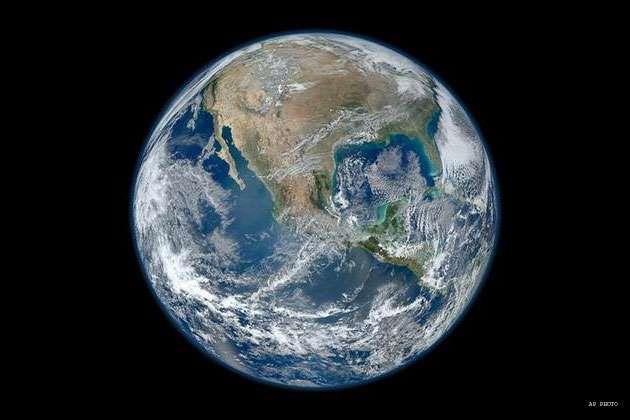April 23, 2015
London: A cosmic ocean of millimeter-sized particles that orbited the young Sun formed the Earth, according to new research. Fragments of asteroids regularly land on Earth as meteorites, comprising of millimeter-sized round stones, known as chondrules.

April 23, 2015
London: A cosmic ocean of millimeter-sized particles that orbited the young Sun formed the Earth, according to new research. Fragments of asteroids regularly land on Earth as meteorites, comprising of millimeter-sized round stones, known as chondrules.

Chondrules are believed to be the original building blocks of the solar system, researchers said. The study shows that asteroids were formed by capturing chondrules with the help of gravitational force.
"The chondrules are of exactly the right size to be slowed down by the gas that orbited the young Sun, and they could then be captured by the asteroids' gravity," said Dr Anders Johansen, from the Lund University in Sweden.
"This causes them to fall down and accumulate like sand piling up in a sandstorm," said co-author Mordecai-Mark Mac Low from the American Museum of Natural History. Working with colleagues from the US, Denmark and Germany, Johansen has developed a computer simulation for what the process may have looked like. They assumed that the asteroids were formed in a kind of cosmic ocean of chondrules and that the asteroids started out much smaller than they are today.
According to the computer simulations, the asteroids grew quickly to a diameter of up to 1000 km, the same size as those found today in the asteroid belt between Mars and Jupiter. The largest asteroids continued to grow to the same mass as the planet Mars, which has ten per cent of the mass of Earth.
"We suddenly realized that this rapid process could say something about the formation of the Earth as well," said Johansen. The research community had previously believed that the Earth was formed through collisions between protoplanets, of the size of Mars, over a period of 100 million years. However, the researchers have not yet understood how the protoplanets themselves were formed.
"Our study shows that protoplanets may have formed very quickly from asteroids, by capturing chondrules in the same way as the asteroids did," said Martin Bizzarro, an expert on chondrules from Copenhagen University and also co-author of the paper. The researchers' theory is supported by studies of meteorites from Mars. These studies have previously shown that Mars was formed over a period of only 1-3 million years, which is within the same time span as the researchers have obtained in the computer simulation.
"Traces of this process remain in asteroids that still contain intact chondrules. The terrestrial planets, however, have all melted after their birth and therefore do not show any direct traces of their original building blocks," said Johansen. The study was published in the journal Science Advances.
Courtesy: PTI







































































































